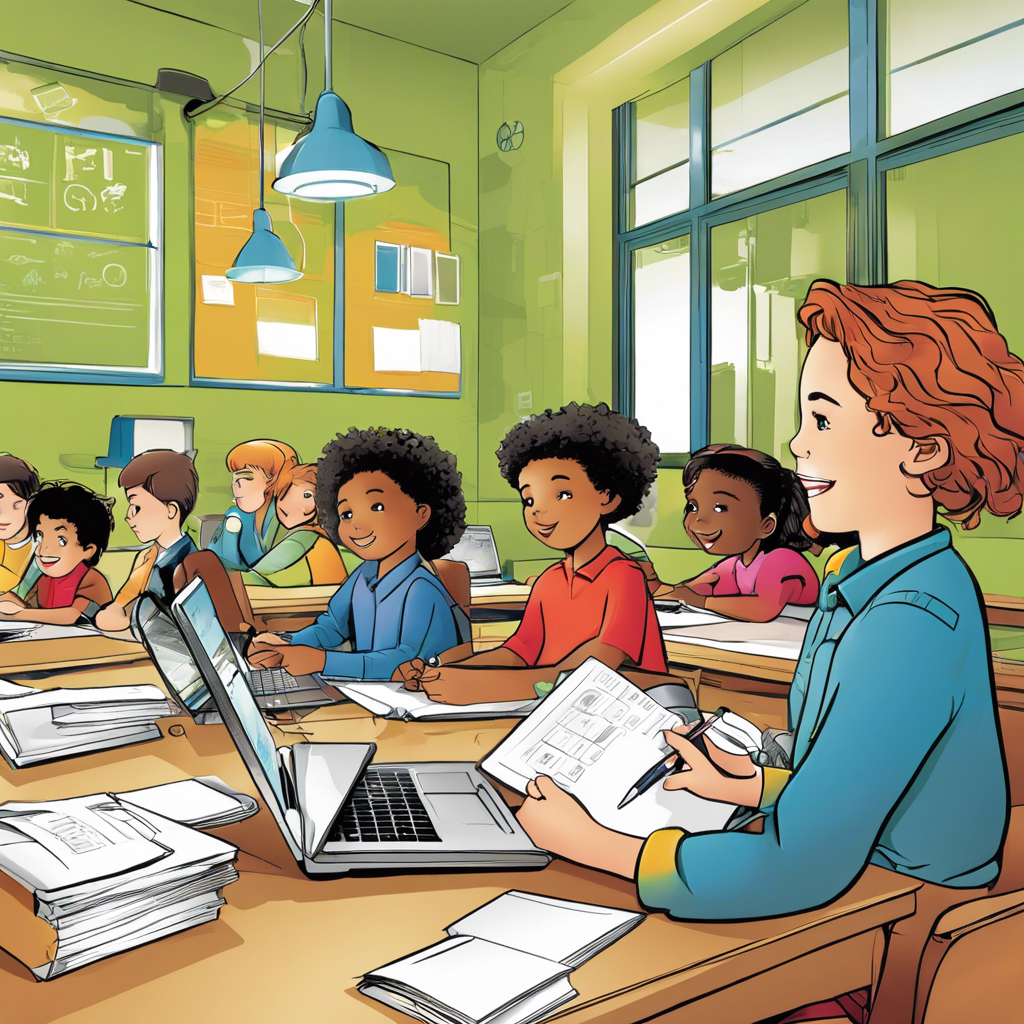Exploring blended learning’s impact on K-12 education, enhancing traditional teaching methods with technology.
The landscape of K-12 education is evolving, and **blended learning** has emerged as a powerful approach that combines traditional classroom instruction with online educational resources. This method harnesses the potential of technology to engage students, provide personalized learning experiences, and foster a more interactive educational environment. Blended learning has shown promising results in improving student outcomes and transforming the way education is delivered.
## Unlocking the Power of Blended Learning
Blended learning, also known as integrated learning, is a strategic approach that seamlessly integrates face-to-face teaching with digital resources. This method allows educators to create a dynamic and flexible learning environment. By leveraging technology, teachers can offer students a variety of learning materials, interactive activities, and personalized feedback. This hybrid approach recognizes the importance of human interaction while embracing the benefits of digital tools.
### Benefits of Blended Learning in K-12 Education
The implementation of blended learning in K-12 classrooms offers numerous advantages. Firstly, it allows for a more personalized learning experience as students can access online materials at their own pace. This adaptability caters to diverse learning styles and abilities, ensuring that each student receives a tailored education. For example, students can review online tutorials or interactive simulations to reinforce concepts they find challenging, promoting a deeper understanding of the subject matter [^1^].
Secondly, blended learning encourages student engagement by incorporating interactive elements. Online platforms often provide gamified learning experiences, quizzes, and multimedia resources that capture students’ attention and make learning more enjoyable. This can lead to increased motivation and a more positive attitude towards education, as demonstrated by a study published in the Journal of Educational Technology & Society[^2^].
### Strategies for Effective Blended Learning
To maximize the benefits of blended learning, educators can employ various strategies. One approach is the flipped classroom model, where students engage with online course materials before class and then participate in interactive activities and discussions during class time. This method encourages critical thinking and collaborative learning [^3^]. Additionally, teachers can utilize learning management systems (LMS) to create structured online courses, track student progress, and provide timely feedback.
Here are some best practices for successful blended learning implementation:
–
Establish clear learning objectives: Define the goals of the blended learning program and communicate them effectively to students and parents.
–
Choose appropriate technology: Select user-friendly tools and platforms that align with the learning objectives and facilitate interactive engagement.
–
Provide professional development: Ensure teachers are trained in using technology effectively and feel supported in their transition to blended learning.
–
Encourage collaboration: Foster a community of learners where students can interact, share ideas, and collaborate on projects.
## Frequently Asked Questions
What are the challenges of implementing blended learning in K-12 schools?
Implementing blended learning may face challenges such as ensuring equitable access to technology, providing adequate training for teachers, and managing the transition from traditional teaching methods. Schools should develop strategies to address these challenges, including providing resources for students without home internet access and offering professional development programs to familiarize teachers with new technologies.
How can blended learning support students with diverse learning needs?
Blended learning allows for differentiated instruction, catering to students with different learning styles and abilities. Online resources can provide additional support for struggling students, while advanced learners can access more challenging materials. Teachers can also use data from online platforms to identify areas where students need extra help and adjust their teaching accordingly.
## Conclusion
Blended learning represents a transformative approach to K-12 education, blending traditional teaching methods with the power of technology. By personalizing learning experiences, engaging students interactively, and fostering a collaborative environment, blended learning has the potential to revolutionize classrooms. While challenges exist, the benefits of this approach are significant. As schools continue to explore innovative ways to educate students, blended learning emerges as a powerful tool for enhancing the learning journey and preparing students for success in a digital world.
—
[^1^]: Smith, J., & Johnson, K. (2017). Blended Learning in the Elementary Classroom: Improving Student Learning Outcomes. Journal of Educational Technology & Society, 20(2), 156-165.
[^2^]: Anderson, L. W., & Garrison, D. R. (2014). Learning in a community of inquiry: A review of the past, a vision of the future.
Canadian Journal of University Continuing Education, 40(1), 1-12.
[^3^]: Staker, H., & Horn, M. B. (2012). Classifying K-12 blended learning. Innosight Institute.
—
Relevant external links:
1. [How Technology is Transforming K-12 Education](https://www.edweek.org/technology/technology-transforming-k-12-education/)
2. [The Benefits of Blended Learning for K-12 Students](https://www.teach.com/blog/what-is-blended-learning/)
3. [Innovative Blended Learning Models in K-12 Education](https://www.theedadvocate.org/blended-learning-models-in-education/)
